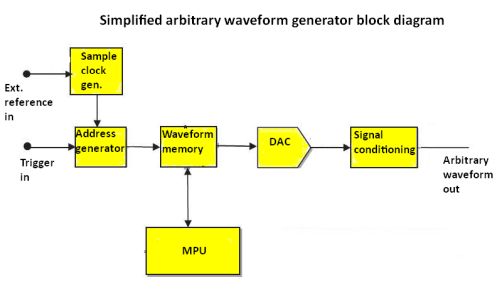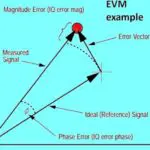A pure musical note from a tuning fork is a basic sine wave. The same note played on a trumpet will look like a saw-tooth wave when displayed on an oscilloscope. The same note from a flute will be a triangular wave. But the same note from a clarinet may appear to be closer to a square wave.
Clearly, a musical instrument doesn’t just produce a single single pitch (frequency). It’s sound waves typically consist of a fundamental frequency or first harmonic and many higher harmonics or overtones.
But it isn’t just wave shape and harmonics that give different instruments different sounds. Also important is how their sound waves change in amplitude (volume) over time.

For example, press a piano key and sound first rises quickly (or attacks) to its maximum amplitude. Then the sound gradually diminishes (decays) to a constant amplitude (sustains). Finally, the sound gradually drops (releases) when the piano player stops pressing the key. On a piano, the attack is relatively slow and the sustain can be lengthy because the notes take a long time to die away. In contrast, a flute’s attack phase is quicker and sharper. There is little decay, and the sustain continues for as long as the flautist keeps blowing. The release is also fast.
All in all, the changing sound volume greatly helps one instrument sound different from another. The pattern of attack, decay, sustain, and release is often referred to as the ADSR envelope shape.

Clearly, the frequency and harmonics an instrument generates, as well as its ADSR shape, are all factors that can be programmed into arbitrary waveform generators. They are also the raw materials for music synthesizers. Thus music synthesizers can be viewed as specialized AWGs optimized for generating sounds.
 The first music synthesizers were, of course, analog. When they emerged in the 1960s, the basic approach was to employ an oscillator with the correct waveform to produce a fundamental frequency and harmonics, then use filtering in later stages and amplification to produce different ADSR envelopes. The more oscillators and filters the synthesizer contained, the more sophisticated were the sounds it could produce. Tuning largely took place via potentiometers and slide switches that adjusted oscillator and filter values. Patch cords routed signals between different oscillators and filters.
The first music synthesizers were, of course, analog. When they emerged in the 1960s, the basic approach was to employ an oscillator with the correct waveform to produce a fundamental frequency and harmonics, then use filtering in later stages and amplification to produce different ADSR envelopes. The more oscillators and filters the synthesizer contained, the more sophisticated were the sounds it could produce. Tuning largely took place via potentiometers and slide switches that adjusted oscillator and filter values. Patch cords routed signals between different oscillators and filters.
The presence of oscillators and filters that produce the sounds of specific instruments offers the opportunity to mix and match filters and oscillators to create sounds never produced by a real instrument. For example, putting a square wave normally produced by an organ through the ADSR values of a traditional piano likely produces sounds unlike those of either instrument.
Besides oscillators generating the fundamental wave shape, synthesizers also typically contain another independent oscillator known as an LFO (low-frequency oscillator). The LFO can be used to modulate the primary oscillators, filters, and amplifiers. For example, applying the LFO to the original oscillator can make the frequency of the sound wobble (a vibrato effect). Applying the LFO to the volume gives what’s called a tremelo effect.
A special kind of synthesizer is called a sampler. It accepts a recorded sound and then allows the operators to manipulate it in various ways by changing the sound settings. The classic application for samplers is in the recording industry where they are used to adjust notes sung by singers that are slightly off key.
On the block diagram level, modern synthesizers look a lot like AWGs. But where an AWG has a trigger input to start the waveform, the synthesizer more typically has an output from a keyboard to start things off. Finally, one major difference between lab AWGs and synthesizers is the synthesizer’s use a standard way of connecting to a PC known as MIDI (Musical Instrument Digital Interface).






Leave a Reply
You must be logged in to post a comment.